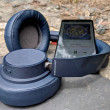Review: Apple iPhone 5s
Media
The iTunes Store has been completely redesigned in iOS 7, and it's one of the apps that truly benefits from the new look. Browsing through the store is pleasant, as is searching, and iTunes offers more content than just about every other platform out there. iTunes remains the most powerful and attractive on-device content store available on a smartphone.
Additionally, the music player has been revamped so that it looks and behaves more like the iTunes Store. The two apps complement one another well. The music player also adds iTunes Radio, a free streaming service that lets you listen to curated radio stations or build your own. iTunes Radio draws from Apple's extensive online library and I found the selection of tunes to be quite good. Quality of the music files streamed over the network isn't as good as locally-stored music, nor is it as good as what Pandora offers, at least to my well-practiced ears.
The video player was glossed over by Apple in iOS 7, but it doesn't behave any differently than before.
There are no third-party content apps preinstalled on the iPhone 5s.
Camera
The camera is another app that's been completely redesigned. It makes some modest usability improvements and adds new features at the same time.
For starters, there is no dedicated camera button, so the camera must be launched from the lock screen shortcut, the Control Center, or the app icon. It launches very quickly on the 5s. There's a basic viewfinder that lets you compose your image. There are tools placed along the left edge that allow you to switch to the user-facing camera, turn HDR on/off, and adjust the flash. The tools on the right edge include the shutter button, photo gallery shortcut, and filters, which can be applied before you take the shot.
The camera can shoot in several different modes, including square (think Instagram), regular (4:3 ratio), burst (press-and-hold shutter button to take continuous shots), panorama, video, and slow-mo (720p HD video at 60 frames per second). The camera defaults to the regular mode when first opened, and the default cannot be changed. In order to access the other modes, you swipe the entire camera interface left or right. It makes sense, but it takes two swipes to get to the panorama tool and two swipes to get to the slow-mo tool. Aside from the clunky double-swiping gestures, everything else about the camera app is very, very fast.
The camera does not offer some of the advanced functions that are on smartphones such as the Nokia Lumia 1020 or the LG G2, but that's the way Apple wants it. It puts simplicity over complexity, and manages the behind-the-scenes controls quite well on its own. It's one of the easiest smartphone cameras to use.
The burst mode often works on accident. If you press the on-screen shutter button, the 5s takes one shot. It you press-and-hold, it will take a million shots before you have a chance to blink. The same thing happens if you press the volume button. You actually have to be careful about how quickly you press the button. The 5s won't show you all the shots you too, though. It will only show you the one it thinks is the best of the bunch. The HDR mode is simpler than ever to use because there's a simple toggle that's available in the viewfinder. You no longer have to access drop-down menu to turn it on or off. The slow-motion feature is just as easy to use as the video camera. It's no faster or slower than any other option on the phone.
Photos
The iPhone 5s has an 8-megapixel sensor with pixels that measure 1.5 microns. Apple says the pixels are larger than those on the iPhone 5 and 5c in order to let in more light. Further, the lens has been widened to f/2.2 to let in even more light. The result, according to Apple, should be better low-light performance.
The iPhone 5s produces images that are on par with what I saw last year on the iPhone 5. That is to say, the pictures are generally very good. Focus is nearly always sharp, white balance is nearly always accurate, and exposure is nearly always spot on. I saw some grain in low-light shots, but not too much. The flash helps a lot, especially when taking pictures of people. Apple specifically gave the iPhone 5s a two-tone flash in order to help people look better. The result is more accurate skin color. I achieved the best results outside on a sunny day. The pictures I got under a blue sky looked amazing.
The front camera, which rated 1.3 megapixels doesn't do as well. The images have far more grain, though they suffice for FaceTime chats. I mean, if you have no other option, you can use the front camera for selfies, but the quality doesn't come close to those taken with the rear camera.
The burst shots produced vary very little. Most people won't be able to tell the difference between the first, middle, and last shots. They look as good as any other shot taken with the camera. The panorama tool works just the same as that on the iPhone 5, and the results are really good. The iPhone's camera produces some of the best panoramas out there.
The camera on the 5s easily matches that of the Galaxy S4 and HTC One, and bests the LG G2. The Lumia 1020 is a different animal thanks to its PureView technology, but the 5s holds its own against Nokia's imaging beast.
Video
The 5s records 1080p HD video at 30 frames per second when shooting in normal mode. These results looked great. I was particularly impressed with the accuracy of the focus, white balance, and exposure. The HD results looked excellent on my large monitor and HDTV.
The 5s also lets you record 720p HD video at 60 frames per second. This is the slow-motion mode, and I love it. The 5s will record about 3 seconds of video at regular speed and then go into the slo-mo mode. It will shoot slo-mo video for as long as you're recording. When you stop the recording, it will speed back up to normal mode for about 3 seconds and then stop. This is great for adding slo-mo to existing video, as it builds in a natural transition from regular-to-slow and back again. Good thinking on Apple's part. The results are just as good as the regular HD video.
Gallery
The gallery application is much, much better in iOS 7 than it was in iOS 6. The gallery app now organizes pictures into Years, Collections, and Moments based on time and location together. Years are what they are, Collections are larger events in a general location (New Jersey), and Moments are more specific events in a more specific location (You Town). The way they are presented visually in the gallery app is really nice, and it makes sense when you drill down into each segment. Alternately, photos are also arranged into albums, and photo streams. Albums can be created and edited on the iPhone 5s, but the process is still fairly awkward.
As far as editing and sharing are concerned, the 5s does OK. Sharing is simple from the gallery to Facebook, Twitter, and email/MMS. Anything beyond that requires a third-party app. Editing features are limited to crop, rotate, red-eye reduction and applying filters for various effects. If you want hardcore editing functions (including white balance and exposure control,) you'll have to switch over to Apple's iPhoto app, which is a separate download.
AirDrop
This is Apple's proprietary sharing function. You have to turn it on, and it requires both Wi-Fi and Bluetooth to function. It's a bit like Android Beam in that it lets you send files (pictures, documents, contact details, etc.) to another iOS device. Content that can be shared via AirDrop lets you know when you press the universal "share" button. If you select AirDrop, you'll see all the other AIrDrop devices that are nearby and it is simply a matter of picking one device and sending the file over. There's no pairing, no connecting, it just sends. The person on the receiving end will get a pop-up notice alerting them to the incoming file. They simply accept and voila, the file transfers over.
Browser
Safari in iOS 7 is the best version yet, hands down. It received the same visual overhaul that the rest of the operating system got, as well as a handful of new tools.
There's less navigational junk in the way of web pages, which can now fill the entire screen. The address bar is smarter than before. For example, it can handle searches. Previously, you had to use a separate search field in the browser to perform a search, now it can be done directly from the address bar. The back/forward, share, and tab tools are all located at the bottom of the screen. There are a bit minimalistic, but they work well. I particularly like the tab function, which shows open web pages in a 3D vertical carousel complete with previews.
In terms of speed, Safari is faster than ever. The browser, combined with LTE and the processor buried in the 5s, mean web pages load incredibly fast.
Bluetooth
The iPhone 5s has Bluetooth 4.0 low energy on board. I had no problem pairing it with a number of different devices, including other iOS devices, Macs, and headphones. Speaking of which, phone calls passed to both headsets and my car's hands-free system were OK, but not great. The volume was acceptable, but quality was a bit low in my opinion. Music sent to stereo Bluetooth headphones, on the other hand, sounded amazing.
Clock
A large digital clock appears on the iOS 7 lock screen when you press either the home button or lock screen button. It is white and cannot be customized. I wish the font were thicker, as it slims down a bit compared to the clock from iOS 6. As always, you have to choose your wallpaper carefully. The clock is almost impossible to see on top of light-colored wallpapers.
GPS
The iPhone 5s ships with an improved version of Apple Maps. Apple Maps is better than last year's disastrous debut, no doubt, but it still isn't as good as Google Maps or Nokia HERE Maps. Apple Maps is fine for plotting directions between two points, and getting you there with voice-guided assistance. Its biggest weakness is handling real-time data. For example, it's not so good at displaying live traffic problem areas, nor is it good at anticipating problems and avoiding them. That said, it is still a neat bit of software, and the 3D flyovers are as cool as ever. The GPS radio in the 5s functions perfectly. It located me within 5 seconds and to within 10 feet consistently. That's as fast and accurate as it gets.
Siri
Siri in iOS 7 has been vastly improved, and the performance on the iPhone 5s is noticeably quicker than the iPhone 5. Siri has a slightly different user interface than before, and the voice has been changed to make it sound a bit more realistic. Siri's odd personality remains intact, and it is able to handle more tasks. You can ask Siri to play music, send messages, read emails, find directions, search the web and so on. Siri isn't quite as quick as Google Now on Android devices, but it's very close. The speed improvement is the biggest benefit on the iPhone 5s, as far as I am concerned, especially when Siri is listening to and transcribing spoken commands into text. The pause used to be painful. Now it is nearly instantaneous.
Touch ID
Touch ID is one of the few features on the iPhone 5s that really differentiates it from not only other iPhones, but competing smartphones as well. The Home button on the front now includes a fingerprint sensor. Apple acquired fingerprint technology when it bought a company called AuthenTec in early 2012. AuthenTec has been making fingerprint sensors for mobile devices for well more than a decade, so the technology is fairly mature. Touch ID can be used to unlock the iPhone 5s, as well as to authorize App Store and iTunes purchases.
In order to use it, Touch ID must first learn your fingerprint(s). There's a tutorial that walks you through the process for setting it up. It takes a few moments, as the software wants to learn the entire pad of your finger, including the side edges. You can add several fingerprints so you don't always have to use the same finger. Once your print is saved, though, you can use it in any orientation on the sensor (it doesn't always have to face the same direction.) Once set up, I found that it worked perfectly. It recognized my finger the first time, every time. I can't say that it's necessarily faster or slower than entering in a pass code, but it it is something different. Using your fingerprint means only you can unlock the device.
If you're worried about the security of this feature, don't be. Touch ID does not store a picture of your fingerprint, and the data is all encrypted. It's better than using a passcode in that anyone can look over your shoulder to read your passcode when you enter it, but no one can replicate your fingerprint, at least not without CSI-level fingerprinting know-how.


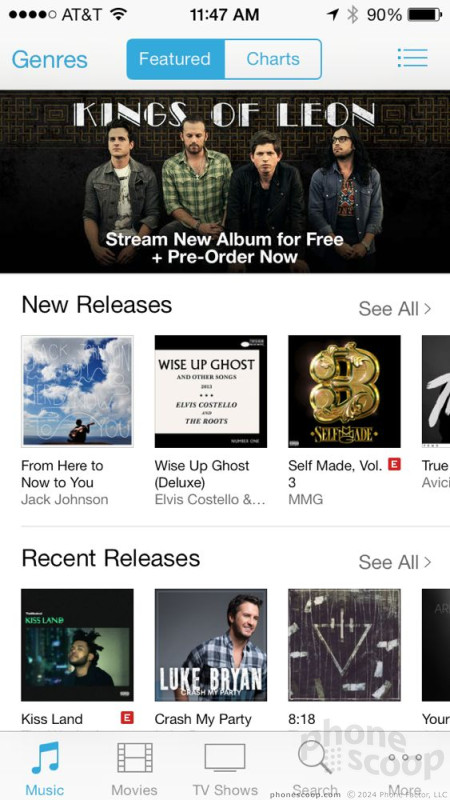
















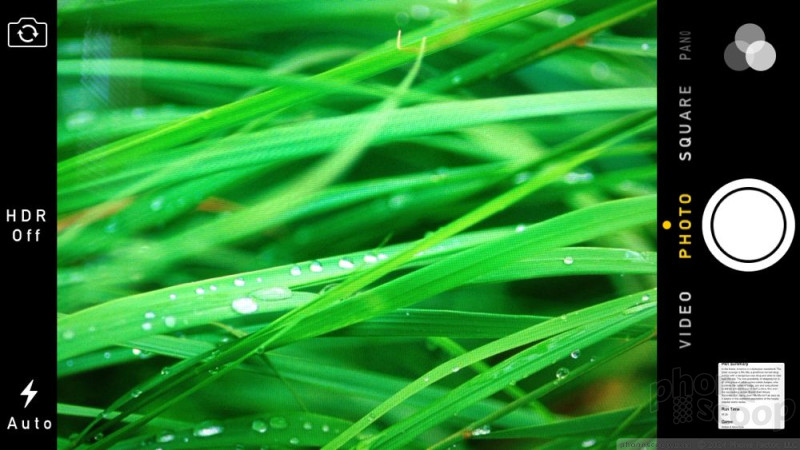



































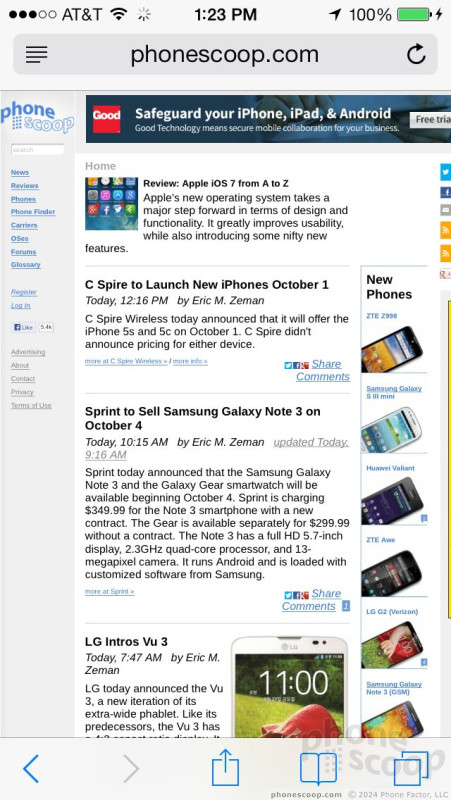






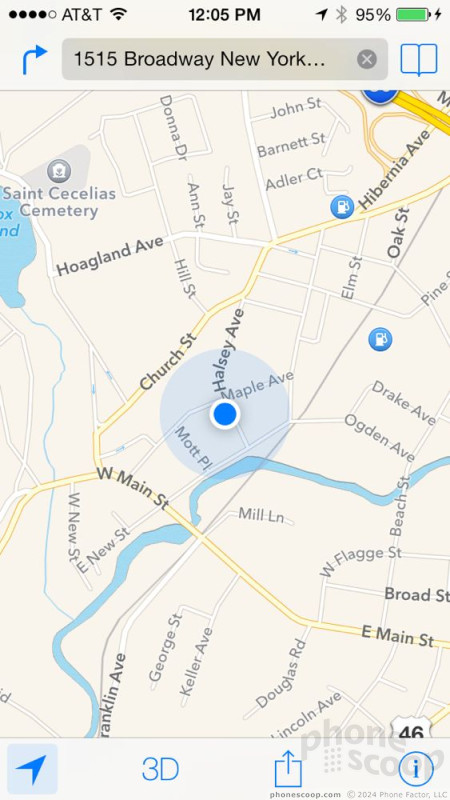










 ReSound Smart Hearing Aid Connects To Your Phone
ReSound Smart Hearing Aid Connects To Your Phone
 Review: Apple iOS 7 from A to Z
Review: Apple iOS 7 from A to Z
 MetroPCS Opens Up iPhone Sales Nationwide
MetroPCS Opens Up iPhone Sales Nationwide
 Apple Makes iOS8 Available to the Masses
Apple Makes iOS8 Available to the Masses
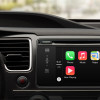 CarPlay Lets Drivers Access Their iPhone Via Siri
CarPlay Lets Drivers Access Their iPhone Via Siri
 Apple iPhone 5s
Apple iPhone 5s


